Why Are Your Cat's Whiskers So Long? (Answered in Detail)
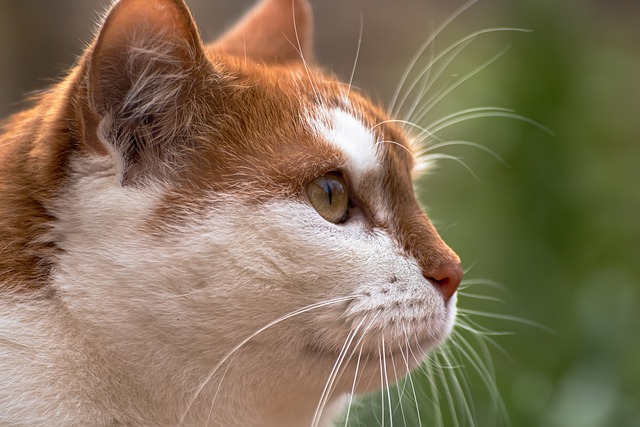
Whoa, have you ever wondered why those furballs roaming your house have whiskers so long they could be mistaken for a pair of antennas?
I mean, seriously, what's the deal?
Let's dig into the mystifying world of feline face fuzz.
Buckle up, we're about to solve this hairy mystery! 😺
Why Can Cats' Whiskers Be So Long?
Cats have long whiskers to help them navigate and detect changes in air movement. These whiskers also play a role in maintaining balance and grace, aiding in jumps and hunting. They are sensitive to touch and alert cats when they are about to get stuck.
Cats' whiskers aren't just decorations, they have a purpose.
The length of a cat's whiskers depends on their breed and genetics.
Long whiskers are all thanks to the genes!
But why do cats need these long whiskers?
Here's the deal.
They help cats navigate with precision.
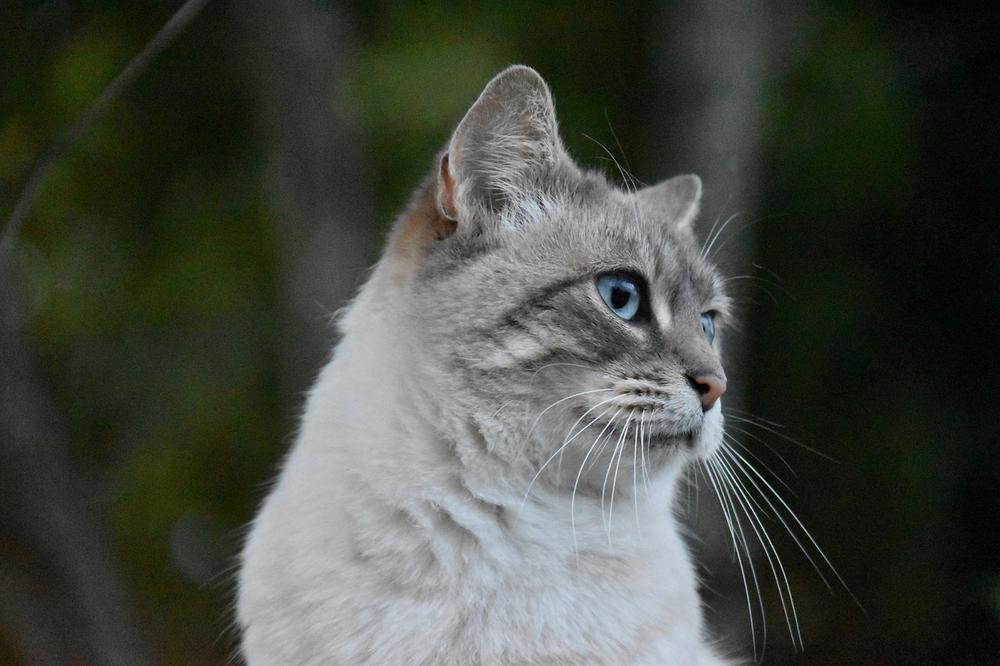
The whiskers act as sensors, detecting even the slightest change in air movement.
And they're sensitive to touch too.
When cats squeeze through tight spaces, the whiskers bend and alert them if they're about to get stuck.
These magnificent whiskers also enhance a cat's balance and grace.
They help cats gauge distances during jumps or hunting escapades.
So when you see your cat's whiskers twitching, remember that it's part of what makes them cool.
Treasure those whiskers!
Main points I'll expand upon further down this article:
- Cats have a set number of whiskers arranged in four rows.
- Whisker length can be influenced by genetics, age, behavior, and heat exposure.
- A well-balanced diet with protein is important for healthy whisker growth.
- Whiskers go through growth, dormancy, and shedding phases.
- Sudden increases in shedding may indicate health issues.
- Whiskers constantly grow and fall out like other hair.
- Whisker length is determined by genetics, with Maine Coons having the longest.
- Whiskers are proportional to a cat's body size, excluding obesity.
- Whiskers are sensory tools for detecting air currents and determining distance.
- Whiskers play a role in navigation, balance, communication, and protection.
Cats Have a Set Number of Mystacial Whiskers
Cats have a specific number of whiskers
Did you know that cats actually have a set number of whiskers?
It's true...
Usually, cats have 24 mystacial whiskers arranged in four rows of three on their cute little cheeks.
But here's the interesting part - these whiskers can be found in various other places on their body too, like their muzzle, jaws, above the eyes, near the ears, and even on their forelegs.
Whisker growth and shedding is influenced by various factors
Ah, those magnificent sensory tools cats possess - whiskers.
The curling of whiskers can be affected by genetics, age, behavior, and exposure to heat.
Fascinating, right?
Here's something important for you to PLEASE keep in mind though:
Cats need a well-balanced diet rich in protein to maintain healthy whiskers.
Just like us, their whiskers need some nutrient love too!
Whiskers constantly grow and fall out
Similar to how our hair goes through different growth cycles, cat whiskers also have their periods of growth, dormancy, and shedding. Shedding whiskers is absolutely normal and it's an ongoing process for kitties.
However, if you notice your furball suddenly shedding more whiskers than usual, it could potentially indicate some health concerns.
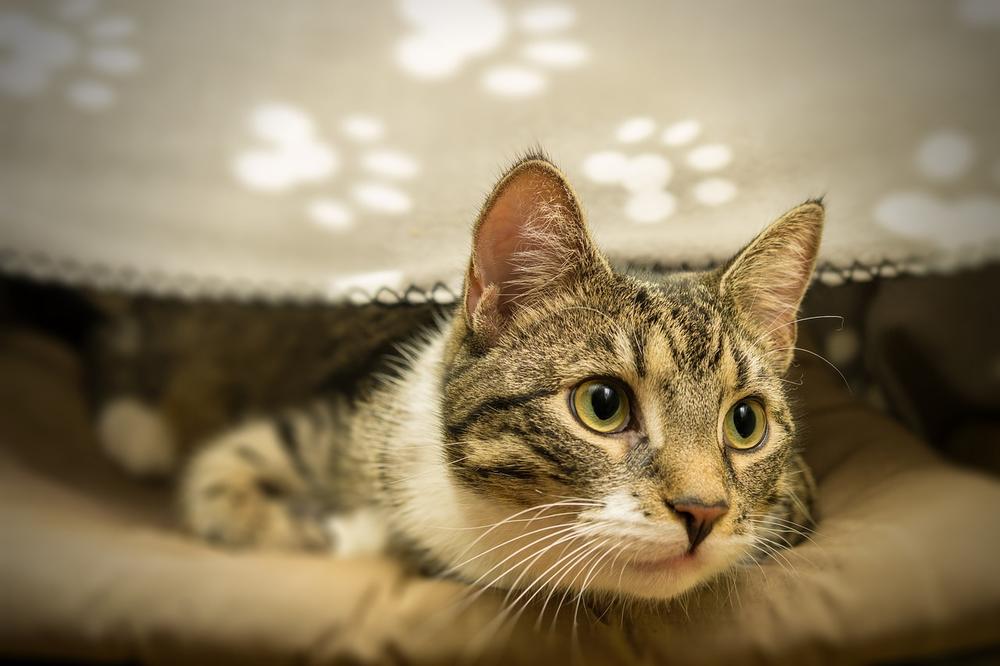
So make sure you keep an eye on their whiskers to ensure everything is okay!
One last fascinating fact before we wrap up:
Whiskers continue to grow and fall out throughout a cat's entire life, just like the other hair on their body.
And guess what?
Genetics play a role in determining the length of a cat's whiskers. In fact, the longest recorded whiskers measured a whopping 7.5 inches on a charming Maine Coon cat.
Can you believe whiskers come in all shapes and sizes?
Cool, right?
And here's something you might not have considered...
The length of a cat's whiskers is directly related to its body size.
But what about obese cats?
Well, keep reading because I'm going to reveal whether weight gain affects whisker growth or not...
Whisker Size Corresponds to the Size of the Cat
Ever wonder why your cat's whiskers are so damn long?
Well, hold onto your britches, 'cause I've got some juicy deets for ya.
Whiskers are like a cat's fancy measuring tape, helping them figure out if they can squeeze into tight spots or find shelter in narrow areas.
Ain't that somethin'?
Yep, these bad boys are like the GPS system for your furry friend.
And guess what?
Whiskers come in all shapes and sizes, just like cats themselves. Makes sense, right?
Take those majestic Maine Coons, for example.
These big ol' fellas sport some seriously impressive whiskers, measuring up to a whopping six inches long!
But listen closely, my friend - the record holder for longest Maine Coon whiskers measured a staggering seven and a half inches!
Can you believe it?!
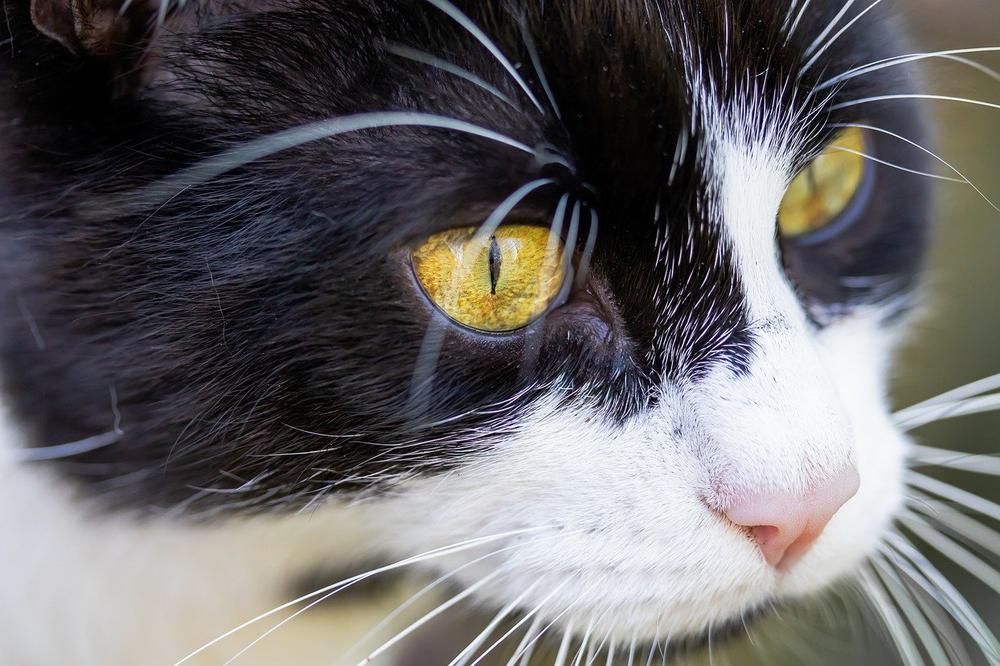
But here's the real kicker - whiskers ain't just for show.
They actually tell us a lot about a cat's all in all size.
In fact, whiskers usually match the width of the cat's body and stop growin' once the kitty reaches its maximum size.
So those long whiskers?
They're perfectly proportionate to their magnificent bodies.
Now, there's one exception to this whole whisker madness - chunky cats.
Yeah, plump kitties might have longer whiskers that match their wider bodies, but don't worry, weight gain doesn't mess with whisker growth.
Phew, good news for our fluffy pals.
Sometimes whiskers fall out as part of their natural cycle, but don't you fret!
New, fresh whiskers will sprout back up lickety-split.
Ain't that somethin'?
But that's not all there is to these magnificent whiskers... You won't believe the incredible sensory powers they possess and the crucial role they play in a cat's everyday life.
Let me blow your mind with some fascinating facts about whiskers that will leave you in awe of our feline friends' extraordinary abilities:
The Sensory Power of Cats' Whiskers
Cats' whiskers, or vibrissae, aren't just long fancy facial hair. They're special tools that cats use to navigate the world around them.
Whiskers are super sensitive because they have nerve endings unlike regular hair.
Picture them as little radar dishes that help cats detect even the slightest air currents. With whiskers, cats can sense movement nearby and stay alert.
Each whisker is connected to a cat's nervous and muscular systems.
They have these cool organ thingies called proprioceptors at their base that determine important things for cats.
By analyzing their whiskers' position, cats can tell how far away something is, where it's coming from, and even how it feels.
Whiskers have superpowers!
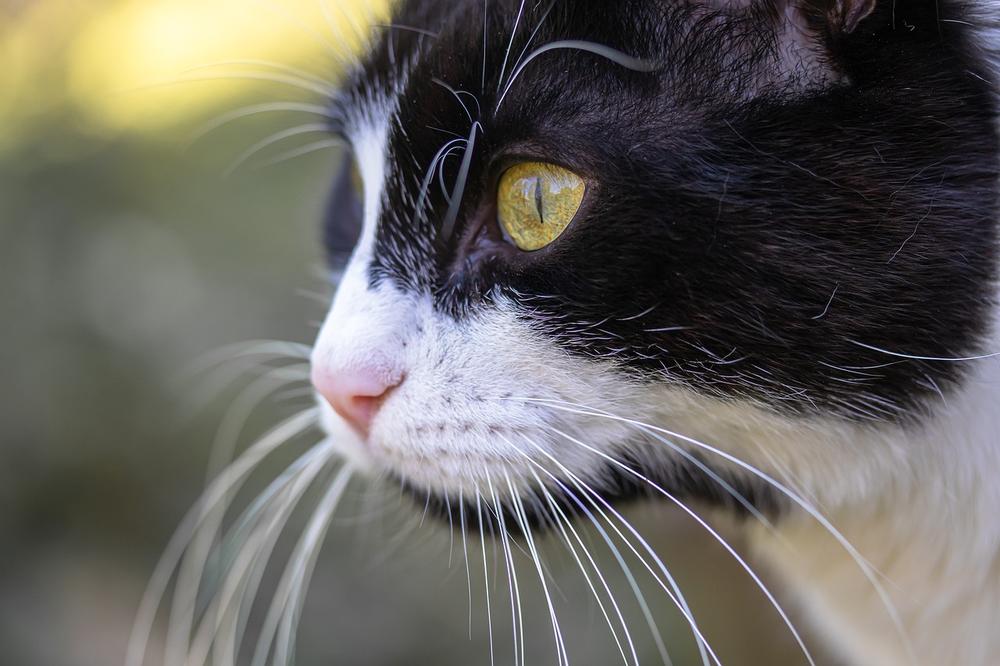
But they do more than just sensory work. They can show a cat's mood too, like your face expressions give you away.
Relaxed whiskers mean contentment, while pressed back whiskers could mean fear or aggression.
Think of whiskers as your internal compass, GPS, map, and bodyguard all rolled into one furry package. They help cats navigate tight spaces, judge narrow openings, and maneuver in dark or sketchy situations.
Here's an important lesson:
Never trim a cat's whiskers.
Snipping whiskers would be like taking batteries out of a smoke detector – not very smart, right?
Whiskers act as an essential safeguard for cats, protecting their faces from harm and warning them when danger is too close.
So let your kitty keep their long and strong whiskers.
They're not just stylish accessories, but they serve crucial functions and pack a sensory punch.
Cats Can Move Them
Cats have the remarkable ability to manipulate their whiskers independently, allowing them to accurately perceive their surroundings. These whiskers play a crucial role in a cat's senses and communication, making it important for them to be evenly spread out on both sides of their face.
Cats have seriously impressive whiskers, I'm telling you.
Not only do they look absolutely charming, but cats can actually move them with incredible precision.
Yep, their whiskers can be independently manipulated depending on how focused or moody they are.
Pretty fancy stuff, right?
But that's not all these whiskers are capable of.
They play a crucial role in a cat’s senses and communication. So don't sweat it too much if their whiskers get trimmed.
They'll grow back in about 2 to 3 months.
However, during that time, their sensory abilities might take a hit.
Now here's what's really fascinating:
Cats need their whiskers evenly spread out on both sides of their face.
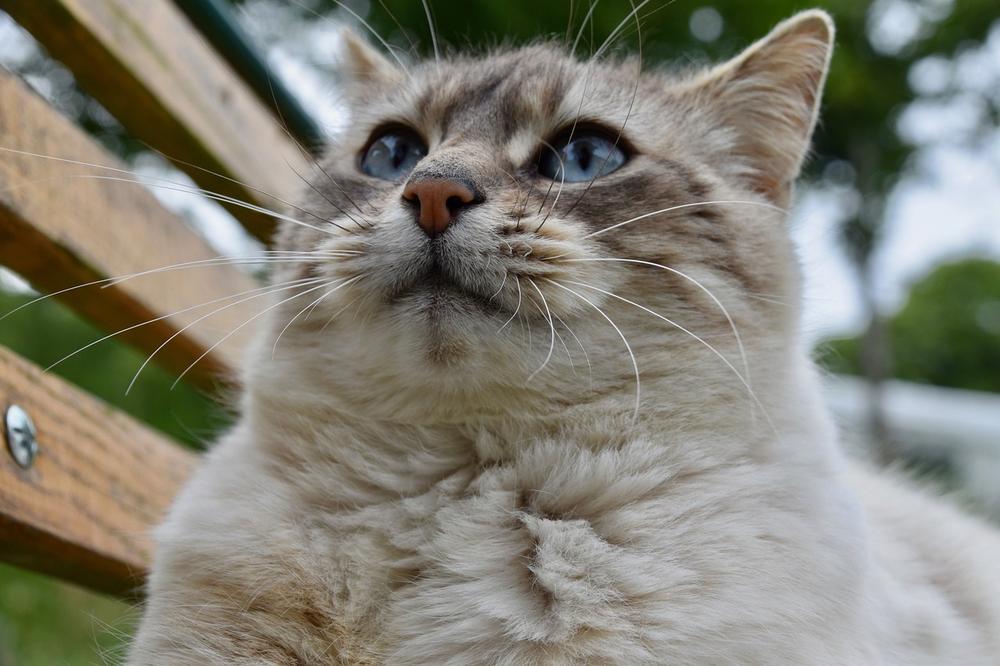
Why is that important?
Because it helps them accurately understand their surroundings.
Uneven whiskers could lead to some serious misjudgments, and nobody wants that!
So keep an eye out:
Cats have the remarkable ability to gracefully move and extend their whiskers, using controlled muscle contractions.
It's like they're communicating through whisker language!
And just so you can appreciate their magical whiskers even more, remember this: Their whisker movements are controlled by stylish muscular contractions.
So next time you see your adorable furball twitching those whiskers, now you know exactly why they're doing it!
And if you're still pondering about our feline companions' fascinating abilities, there's one more mystery you might want to explore.
Have you ever wondered why do cats' noses get wet when they purr? It's a question that has intrigued many, and luckily for you, I've written a whole blog post dedicated to unraveling this enigma.
Dive into the intriguing world of feline purrs and discover the secrets behind this wet phenomenon in my article on Why Do Cats Noses Get Wet When They Purr.
Buckle up and embark on this captivating journey of feline secrets!
Cats Can Have Whisker Stress
Here's how to prevent whisker stress in your cat:
- You need to know that whiskers are vital for your cat's well-being.
- Don't cut or pluck their whiskers - it's not good for them.
- Remember that changes in whisker position can indicate how your cat is feeling.
- Use wide bowls so their whiskers don't touch the sides and bother them.
- Choose shallow bowls to avoid whisker fatigue during meals.
- Be gentle when rubbing their whiskers to avoid overstimulation.
- Keep an eye out for symptoms like sores or sensitivity in their skin.
- If they lose whiskers and experience unusual symptoms, get professional help.
- Different cat breeds have different whisker length and brittleness, so consider that.
- Watch out for skin irritation or other health issues that could cause whisker loss.
Whiskers aren't just for show - they play a crucial role in a cat's communication and navigation.
By understanding and addressing whisker stress, you'll ensure your cat stays happy and healthy. 😺
And now, let's delve deeper into the fascinating world of cat whiskers!
But before we do, I want to emphasize how vital it is to understand the multifaceted nature of these incredible sensory organs.
Leg Whiskers Help With Hunting
Leg whiskers are essential for hunting, as they enable cats to detect vibrations, improve stalking skills, and sense even the slightest movement. These multitasking wonders also aid in climbing trees, maintaining balance, and conveying communication. They truly make cats masters of precision in their hunting endeavors.
Cats need leg whiskers, also called carpal whiskers.
Don't underestimate them, they're important.
Leg whiskers are crucial for hunting.
They help detect vibrations and improve stalking skills.
These whiskers make cats masters of precision.
Whiskers are also handy in detecting movement.
Imagine sensing even the smallest twitch.
That's what whiskers do!
Whiskers give cats an advantage in hunting.
But there's more...
They also help when climbing trees.
Detecting shifts helps navigate through branches.
And whiskers prevent embarrassing incidents.
They maintain balance during acrobatics.
Whiskers are multitasking wonders!
They protect the precious face too. Furthermore, whiskers convey communication and help with prey monitoring. So next time your cat gives that intense stare, remember the detective work whiskers do!
And that wraps up today's article.
You've made it to the end of my blog post, so I wanted to ask for your feedback. Did you enjoy reading it? I invest a significant amount of time and effort into crafting comprehensive and helpful blog posts. That being said, it gives me great satisfaction. It'd mean the world to me if you'd click on any of the social sharing icons to share this post with others. Your support is highly appreciated! Thank you!
Talk soon,
-Sarah Davis